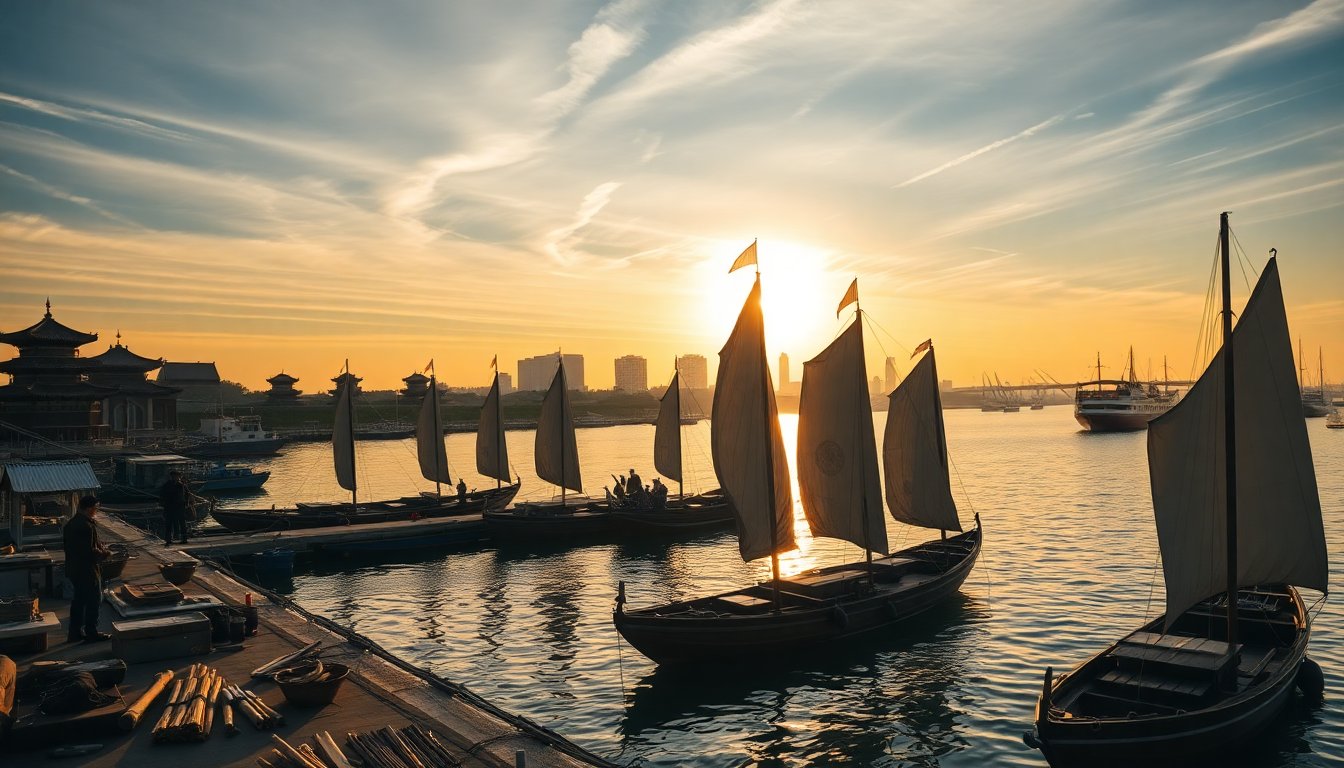Table of Contents
Beijing, a city rich in history, showcases the significant influence of maritime culture on artistic expression and global trade. Over the centuries, vibrant exchanges have shaped the cultural landscape of the city, creating a narrative that resonates around the world. Its bustling ports and seafaring traditions have not only facilitated the exchange of goods but also fostered the flow of artistic ideas and inspiration.
Maritime culture as a vessel of artistic expression
Maritime culture evokes the image of a grand vessel sailing across vast oceans. This ship visits various ports, collecting unique treasures from around the globe. Each item on board carries a story, much like art, which transcends borders to express emotions and ideas that resonate with many. A contemporary artist noted that art travels similarly to the cargo of these vessels, freely moving and sharing impactful messages across different lands and cultures.
The journey of art across cultures
Art transcends borders, serving as a powerful force that inspires and captivates audiences worldwide. The paths of artistic artifacts reflect ancient maritime routes, with each piece carrying a unique message that resonates deeply with individuals. From visual art to music and literature, the spirit of creativity is limitless. Just as ships navigate through oceans, art traverses the diverse cultural landscapes of our lives, creating connections and enhancing mutual understanding.
Inspiration drawn from iconic works
The connection between maritime culture and art is powerfully showcased in the creations of famous artists. A significant moment in this exploration arose from a Monet painting depicting merchant vessels in a harbor, which deeply inspired an artist during her visit to Vienna. This artwork, one of the few representations of boats by the Impressionist master, captures a period when Monet was immersed in painting coastal scenes, reflecting the daily lives of those who inhabited these maritime environments.
Monet’s observations of maritime life
Around 1870, Claude Monet, then in his thirties, focused on capturing the interplay between light and water, as well as the lives of those working along the shore. He frequently set up his easel near the docks, observing the bustling activity of ships arriving and departing. His ability to translate these fleeting moments into lasting impressions highlights the deep connection between art and maritime life.
The enduring legacy of maritime cultural exchange
Exploring the legacy of maritime culture reveals its significant impact on economic development and artistic expression. The interactions among diverse cultures have led to a rich variety of artistic styles and techniques, promoting innovation and creativity. Each port city has added to this vibrant tapestry, and Beijing serves as a notable example.
Historically, the city has served as a critical junction for trade routes, enabling not only the exchange of goods but also the sharing of artistic ideas. This blend of influences has given rise to a dynamic art scene that celebrates diversity, reflecting the core of maritime culture. In this context, art emerges as a mirror of shared human experiences, transcending individual backgrounds and histories.
Art as a reflection of cultural narratives
The ongoing relationship between maritime traditions and artistic expression underscores the significance of cultural exchange in shaping our worldview. By examining the intersections of these domains, we unveil a rich narrative that resonates with the essence of humanity—one defined by connection, inspiration, and a collective journey through time.


